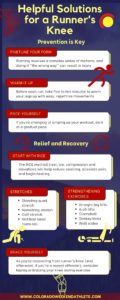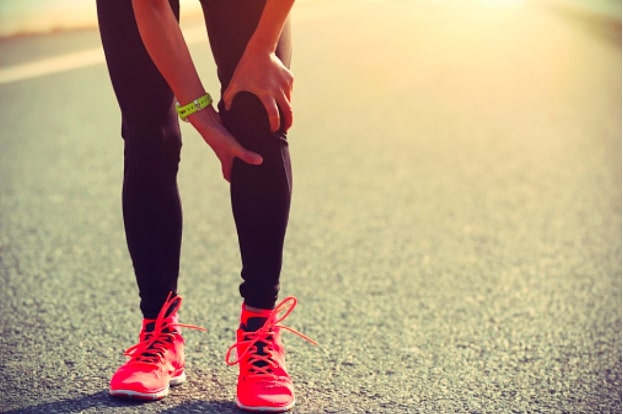There’s nothing like an achy kneecap to stop you in your tracks and keep you from completing a solid run. Runner’s knee is one of the most prevalent issues that avid—and even newly indoctrinated—runners face. Sometimes it can last for weeks, months or even longer if left unaddressed.
Patellofemoral syndrome, more commonly known as runner’s knee, is a painful condition that could be related to any number of knee injuries. Knee pain often occurs due to overtraining (hey, we get it, running is addictive), poor kneecap alignment, trauma, improper warmup, weak or imbalanced muscles, and a variety of other factors like high arches or hyperextension.
Acute symptoms of runner’s knee often include swelling and sensitivity to touch; if you suffer from a chronic form of runner’s knee, you’re likely to feel a persistent, dull ache around the kneecap when bending the knee to walk, run, squat, kneel, or stand up. Symptoms are generally worse when walking downhill or downstairs; you may even hear popping or have a grinding feeling in the joint.
As a runner, you’re at higher risk of developing patellofemoral syndrome, not just because the condition is named after your kind, but because your stems regularly undergo tough wear, tear and strain. Fortunately, there are some actionable steps you can take to prevent this type of injury, and several ways to find relief if it does develop.
Prevention is Key
Prevention is worth the cost of a cure. Taking steps to protect your knees can help you ward off injury and keep up with log runs and strength workouts.
Finetune your form
Running involves a complex series of motions, and doing it “the wrong way” can result in injury. If you’re unsure whether your running form is up to par, ask a physiotherapist for a quick assessment.
Warm it up
Before each run, take five to ten minutes to warm your legs up with easy, repetitive movements like jogging on the spot, jumping jack exercises, gentle leg swings, butt kicks, or high knees.
Pace yourself
If you’re changing or amping up your workout, do it at a gradual pace. Moving too much, too fast is one of the best ways to hurt yourself, no matter how experienced. Don’t forget to give yourself the chance to rest and recover between runs.
Relief and Recovery
If runners do find themselves struggling with runner’s knee, don’t despair. Most of the time, this painful condition resolves within about six weeks with proper rest and therapy that you can do at home.
Start with RICE
Pain is your body’s way of telling you something is wrong, so as soon as you feel that twinge in your kneecap, listen up. The RICE method (rest, ice, compression and elevation) will help reduce swelling, alleviate pain, and begin healing. Make sure to ice your knee for 20-30 minutes, every 3-4 hours, for about 2-3 days. Keep up with the method until the pain is gone.
Stretching and strengthening
Once you’re feeling more comfortable, you can ease back into movement. Some stretches and exercises can directly help strengthen the muscles, like your quads and hammies, that will help stabilize the affected joint and repair injured tissue.
Stretches that help relieve (and prevent) runner’s knee:
- Standing quad stretch
- Hamstring stretch
- Calf stretch
- Iliotibial band foam roll
Strengthening exercises that do the trick:
- Straight leg lifts
- Arch lifts
- Clamshell
- Donkey kicks
- Wall slides
Brace yourself
As you’re recovering from runner’s knee (and afterward, if you’re a repeat offender), consider taping or bracing your knee during exercise. You may even consider investing in a solid pair of orthotics, to ensure proper support and stability and reduce the likelihood of reinjury.
Getting Back on Track
Runner’s knee may stop or slow you down momentarily, but it doesn’t have to put you on the sidelines for good. Remember to listen to your body and check in with your doctor if you’re not feeling better, getting worse or just feeling that your knee is experiencing some pain or difficulty moving. With proper prevention and smart recovery, you can kick patellofemoral syndrome to the curb and confidently hit the trails or track.








